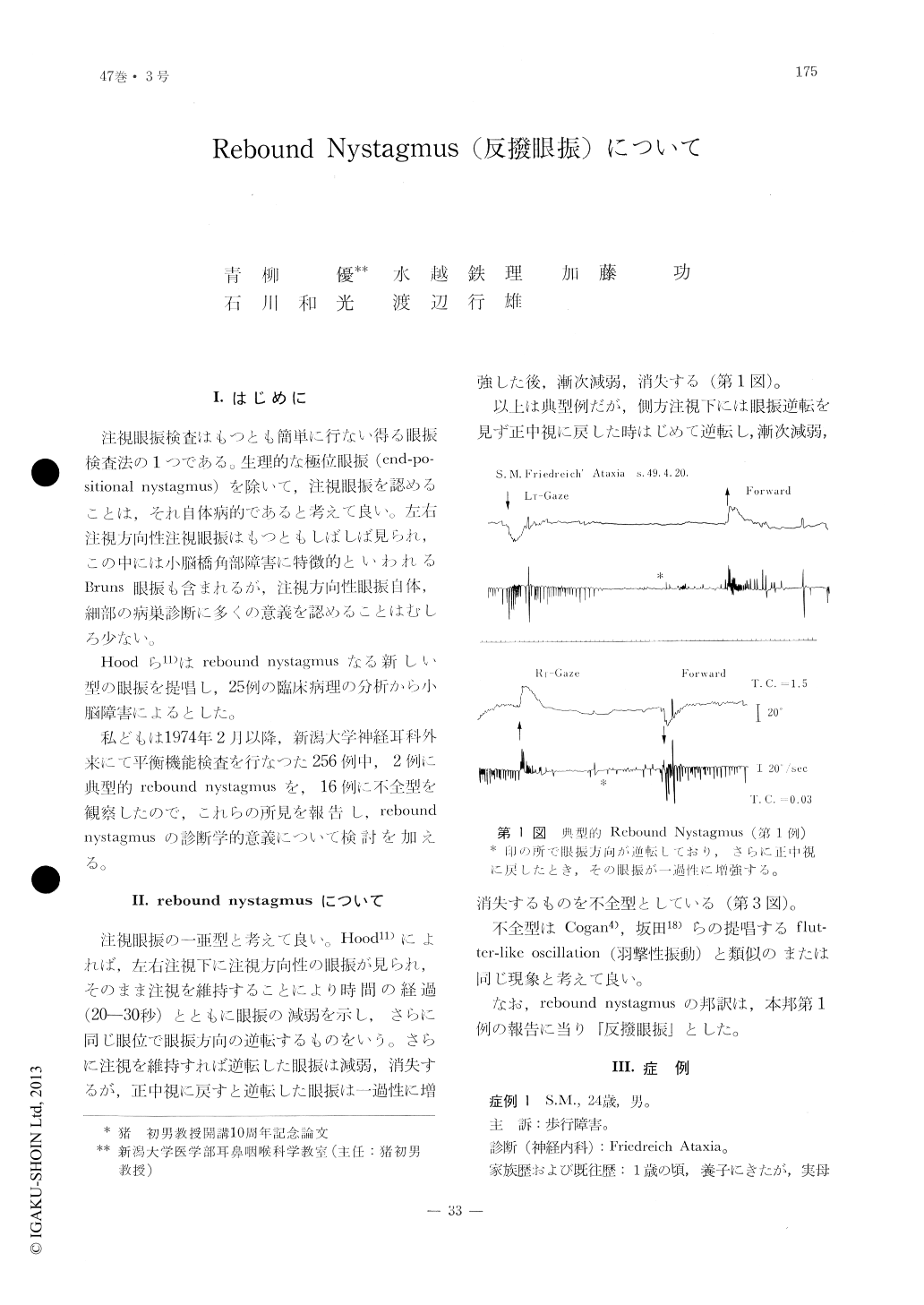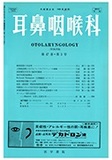Japanese
English
- 有料閲覧
- Abstract 文献概要
- 1ページ目 Look Inside
I.はじめに
注視眼振検査はもつとも簡単に行ない得る眼振検査法の1つである。生理的な極位眼振(end-positional nystagmus)を除いて,注視眼振を認めることは,それ自体病的であると考えて良い。左右注視方向性注視眼振はもつともしばしば見られ,この中には小脳橋角部障害に特徴的といわれるBruns眼振も含まれるが,注視方向性眼振自体,細部の病巣診断に多くの意義を認めることはむしろ少ない。
Hoodら11)はrebound nystagmusなる新しい型の眼振を提唱し,25例の臨床病理の分析から小脳障害によるとした。
Rebound nystagmus is a term newly applied by Hood et al. to the spontaneous gaze nystagmus in 1973. Its characteristics are that with the gaze deviated to the right, the nystagmus is turned to the right- and visa versa to the left. However after the lapse of 20 seconds consecutively the nystagmus may show signs of fatigue by reversing its direction.
Two cases of a typical rebound nystagmus and 16 cases of atypical ones are reported. The mechanism of the flutter-like oscillation, ocular dysmetria and rebound nystagmus are discussed. All of these 18 cases were observed to be accompanied by some cerebellar symptoms. As Hood et al. had already stressed the presence of rebound nystagmus is a sign that there is some cerebellar involvement.

Copyright © 1975, Igaku-Shoin Ltd. All rights reserved.


